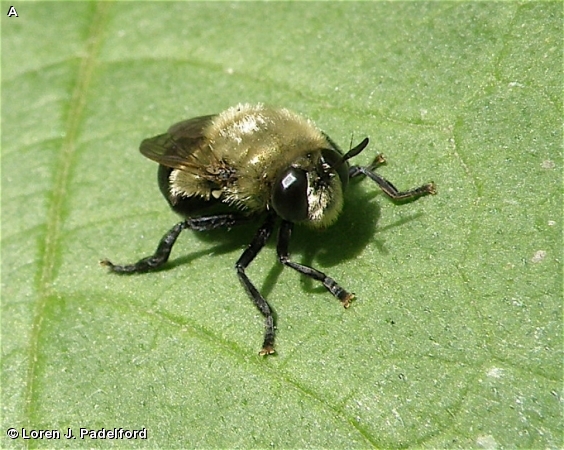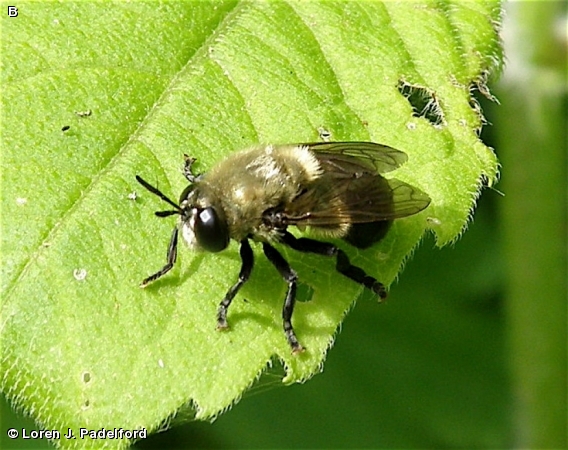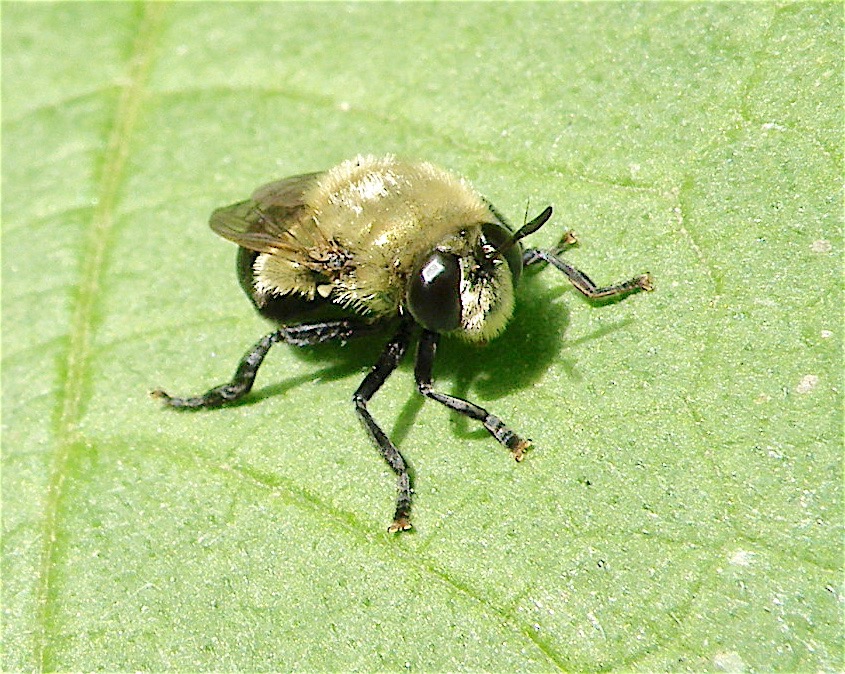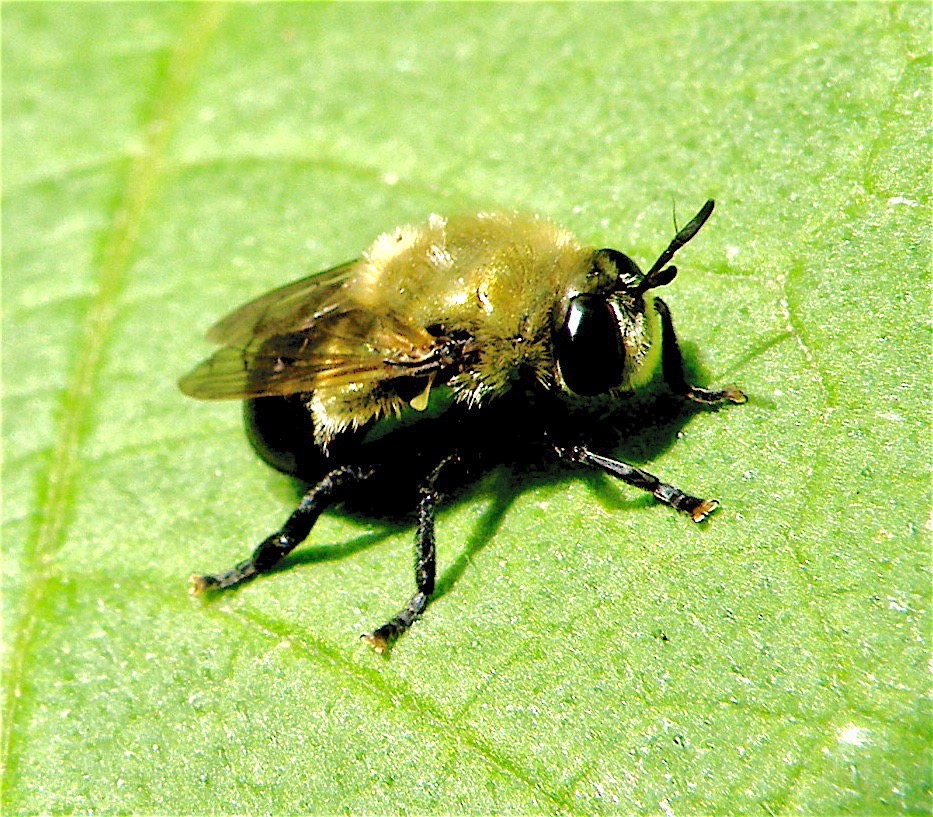
Microdon flies vary from approximately 1/4 to 1/2 inch (6-13 mm) in length. Microdon flies are flower fly bee mimics with black antennae, eyes, thorax and abdomen. The long antennae of the fly is distinctive. The thorax, abdomen and legs are covered with light tan-colored hairs. The wings are brown. In all North American species, larvae live and develop within ant nests. Adults, unlike typical syrphids, do not hover or visit flowers, but spend their lives near ant colonies. There are 31 known species in North America. There are two different species represented here, images 1, 3 and 4 were taken in late May in Fontenelle Forest and image 2 was taken in mid-June. These flies were identified by volunteer experts at Bug Guide.
The frequency of occurrence is unknown although these flies are thought to be common. They can be seen sitting on vegetation and when seen, are probably near their host ant colony. They can also be seen hovering over ant colonies, presumably for the purpose of laying eggs in or near the colony. Each species of Microdon fly is associated with a species of ant for their host. Sometimes the fly can be identified by knowing the species of ant with which it is associating.
The larvae are brown and resemble small snails. They live in ant nests and feed on ant larvae. Second and third instar larvae are predaceous on host-ant larvae, often species of Camponotus or Formica. It is thought that first instar Microdon larvae feed from the host-ant larvae by trophallaxis as they have been observed probing host-ant larvae, presumably prompting the ant larvae to regurgitate pre-digested food originally fed to them by worker ants.
Disclaimer: The content of NatureSearch is provided by dedicated volunteer Naturalists of Fontenelle Forest who strive to provide the most accurate information available. Contributors of the images retain their copyrights. The point of contact for this page is: Loren Padelford.




